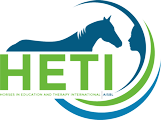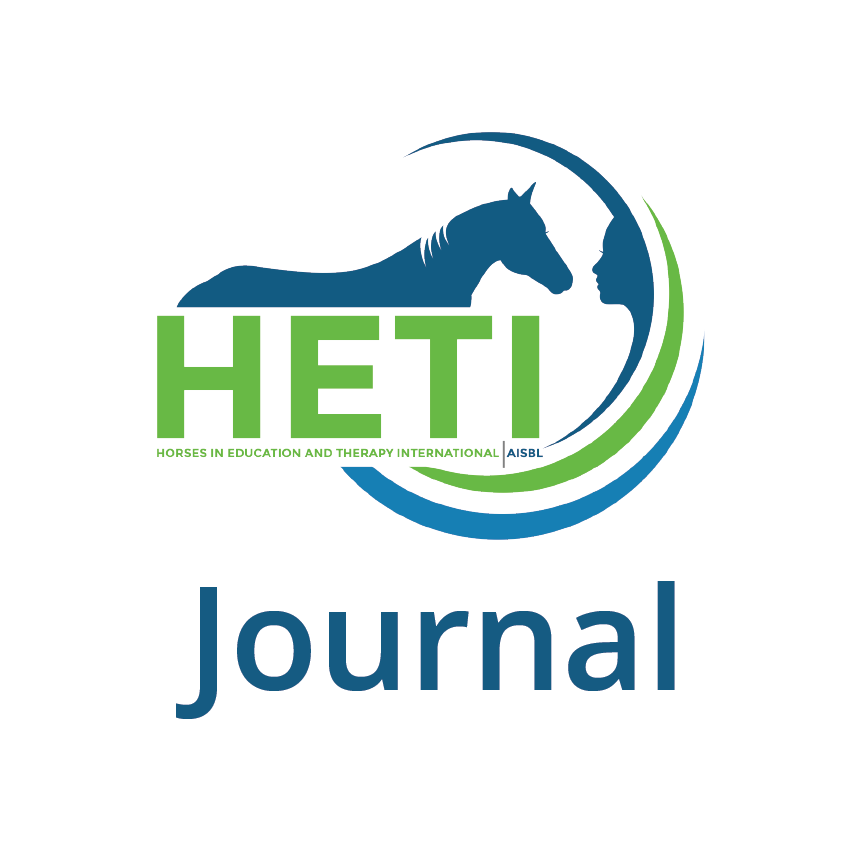An analysis of Equine Stress Levels after Participation in Therapy Sessions 2005
€5.00
| Author | Tracy Wharton, Marguerite Malone, Beth Macauley |
|---|---|
| Year | 2005 |
Equine facilitated psychotherapy and speech-language therapy have become increasingly
popular models in recent years. According to the North American Riding for the Handicapped Association, "more than 32,000 individuals benefit from equine facilitated activities at nearly
700 NARHA (accredited) centers throughout the United States and Canada," to say nothing of the hundreds of centers or practitioners who are not members of this organization (NARHA, 2003). Service providers range across the disciplines, often including nursing, psychology,
social work, physical therapy, occupational therapy, communication and educational professionals, along with riding instructors, equine trainers and managers, and business staff. On a strictly business level, the number of therapy farms that operate with a budget greater than $300,000 annually has steadily grown in the last decade. While most providers are hardly that large, collectively the sheer size of the population being served makes this industry an important area of focus for administrators and providers alike.
Organizations and providers of all disciplines must be ever mindful to protect the resources that make interventions with clients successful, and in the human service domains, the primary resource is the therapy provider. The threat of burn out and secondary traumatization to mental health providers is very real. Correspondingly, there has finally begun to be concern in the mental health and veterinary industries about the strain that this work places on the animals, who are considered to be partners in the treatment of human clients (Kohanov, 2004; Malone, 2004; Rector, 2003). Due to the unusual demands placed on these animals through specialized training, unpredictable client behavior, and what has been termed "sympathetic response" in animals to the emotional states of humans, there is interest in analyzing the biological responses of the animals to various factors in the therapy environment, in order to learn how to minimize
the stressors placed on the animals, protect their long-tenn health, and support their role in the therapy process (Kohanov, 2004; Malone, 2004; O'Rourke, 2004).
Serendipity Farm in Tuscaloosa, AL, began to collect data on animals, clients, therapists and farm staff in 2003, in order to begin to look at the variables that impact the success of the programs, and the long-term health and comfort of the animal providers. As access to a veterinarian for complex medical procedures is by consult only at this farm, simple measures that could be reliably and easily taken over a long period of time were taken on the animals. Pulse and respiration were chosen as measures of increased stress, based on knowledge of horse physiology and considering the need for a measure that all farm staff could be trained to accurately record. According to Dr. Beth Macauley, director ofBama Equine Assisted Therapy, and Dr. Marguerite Malone, director of Serendipity Farm, elevated pulse and respiration are automatic stress responses in both humans and animals. Since increased pulse rates are an indicator of increased stress in horses, this measure was used as a dependent variable in a search for the best prediction model.
During this collection of data, other researchers in the field of animal assisted therapy began to investigate the connection between animal stress and variables in the environment.
Data has begun to emerge to support the assertion that some types of therapy are more stressful on the animals than other types of therapy (McCabe, 2005, in press; O'Rourke, 2004). Asa response to the general call for additional information, and in further investigation of emerging evidence, analysis was undertaken of data collected at Serendipity Farm over one calendar year, to assess the impact of variables in the environment on the overall stress levels of the horses, and to determine if there are·points of intervention which may be important for farm staff and administrators to acknowledge for the long-term support of the therapy teams.

